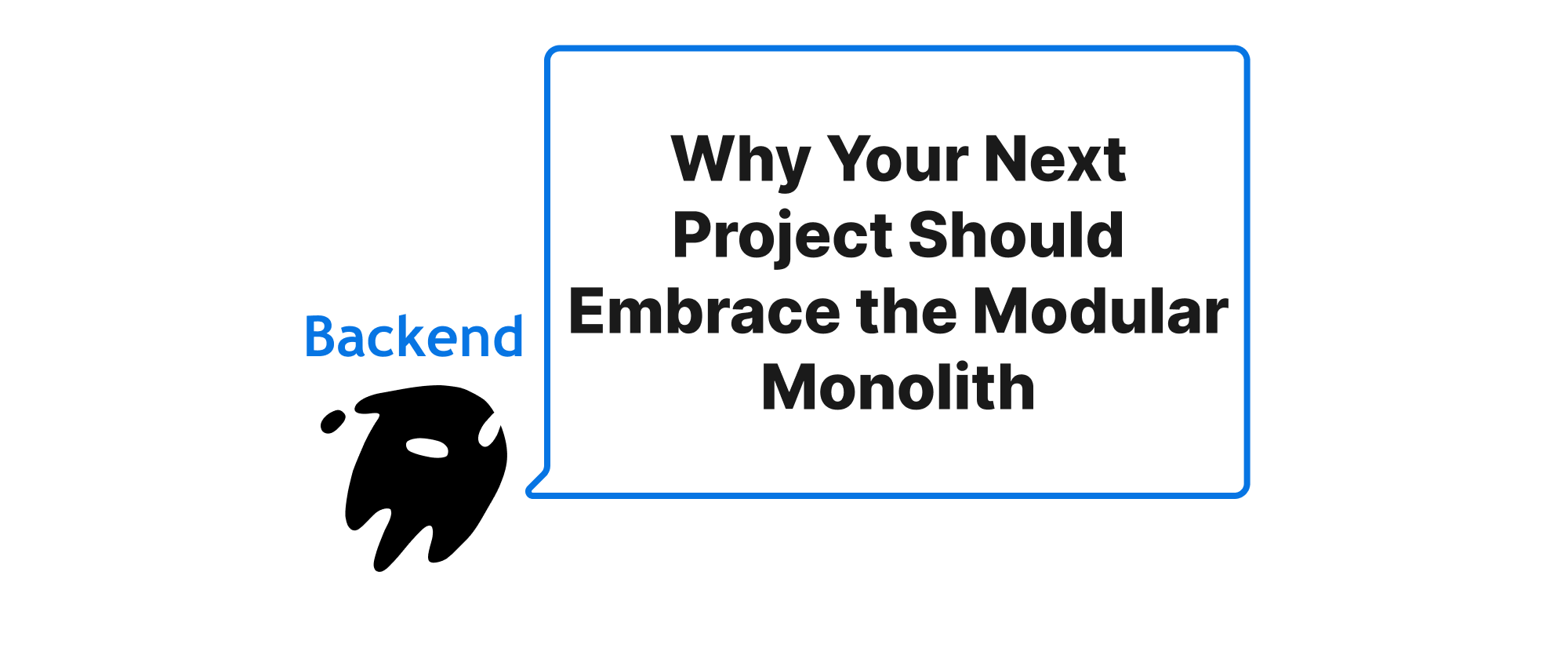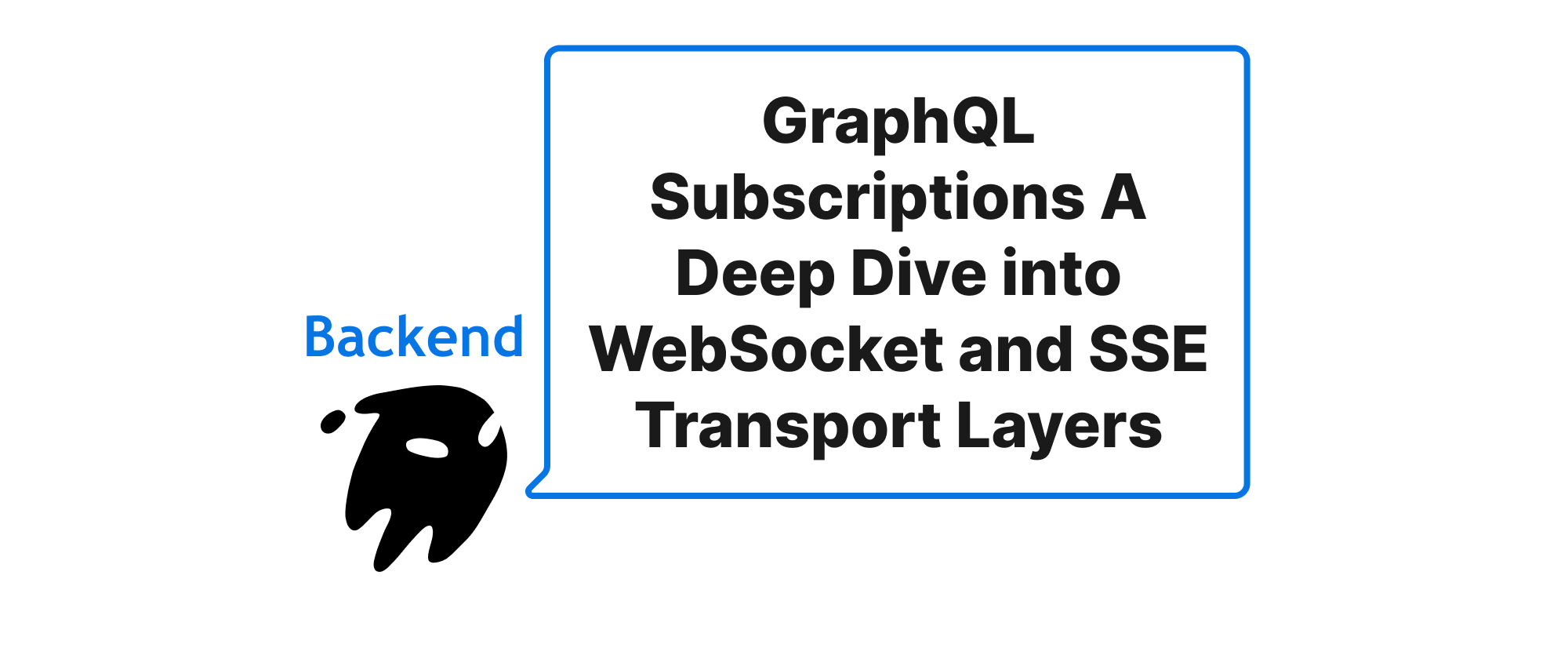Why Your Next Project Should Embrace the Modular Monolith
James Reed
Infrastructure Engineer · Leapcell

Introduction
In the ever-evolving landscape of backend development, the allure of microservices has grown immensely. The promise of independent deployments, improved scalability, and discrete teams often makes them the de facto choice for new projects. However, this fervent adoption sometimes overlooks the inherent complexity and operational overhead that microservices introduce, especially in the early stages of a project's lifecycle. This article posits a compelling alternative: the modular monolith. We will delve into why starting with a modular monolith can often be a more pragmatic, efficient, and ultimately more successful strategy for your next backend project, laying a robust foundation for future scalability and evolution, rather than immediately jumping into the intricate world of distributed systems.
The Pragmatic Power of the Modular Monolith
Before we delve into the "why," let's establish a common understanding of the core terms that will frame our discussion.
Monolith: Traditionally, a monolithic application is built as a single, indivisible unit. All components – presentation, business logic, and data access – are tightly coupled and run within a single process. Scaling often means replicating the entire application.
Microservices: In contrast, microservices are small, independent services, each running in its own process and communicating with others typically over a network. Each service is responsible for a specific business capability, can be developed by a small, autonomous team, and can be deployed independently.
Modular Monolith: This is not a traditional monolith. A modular monolith is a single application (a monolith) that is internally structured with well-defined, independent modules. Each module encapsulates a specific business capability, with clear boundaries, interfaces, and minimal coupling to other modules. While they share the same codebase and deployment unit, their internal design principles mirror those of microservices.
The Problem with Premature Microservices Adoption
Many projects leap into microservices prematurely, driven by a desire to be "modern" or an assumption that they inherently offer superior performance and scalability. However, this often leads to:
- Increased Complexity: Distributed systems are inherently complex. Managing inter-service communication, ensuring data consistency across services, distributed tracing, and debugging across multiple deployment units adds significant overhead.
- Higher Operational Burden: Deploying, monitoring, and scaling a multitude of services requires sophisticated CI/CD pipelines, container orchestration, and specialized tools. This is a considerable investment for a new team or project.
- Steeper Learning Curve: Teams new to microservices will spend significant time learning new frameworks, deployment strategies, and troubleshooting techniques instead of focusing on delivering business value.
- Reduced Development Velocity (Initially): While microservices promise long-term development velocity, the initial setup and communication overhead can significantly slow down progress.
Why the Modular Monolith Shines for New Projects
The modular monolith offers a sweet spot, providing many of the benefits of microservices without their initial complexity:
-
Simplicity of Deployment and Operations: It's a single unit. Deployment is straightforward, and monitoring, logging, and debugging are significantly simpler compared to a distributed system. This allows teams to focus on building features rather than managing infrastructure.
-
Shared Resources and Cohesion: Since all modules live within the same process, direct function calls between modules are possible, avoiding network latency and serialization overhead. Shared libraries and utilities are easily accessible. Data consistency is simpler to manage within a single database or shared transaction context.
-
Faster Development Velocity (Initially): With fewer moving parts and simpler communication, developers can iterate faster, test more thoroughly, and onboard new team members more quickly. This is crucial for proving out an idea or achieving product-market fit.
-
Enforced Modularity and Clear Boundaries: The core principle of a modular monolith is to enforce strict boundaries between modules. This prepares the application for a potential microservices transition down the line, as each module is already a candidate for extraction into an independent service.
-
Easy Refactoring and Cross-Cutting Concerns: Refactoring internal module boundaries is much easier within a single codebase than across network-separated services. Implementing cross-cutting concerns like authentication or logging is also simpler.
Building a Modular Monolith: Practical Implementation
The key to a successful modular monolith lies in disciplined architectural design. Let's look at an example using Python and Flask, demonstrating how to structure a modular application.
Imagine an e-commerce application with modules for Users, Products, and Orders.
/
├── app.py # Main application entry point
├── config.py # Central configuration
├── common/ # Shared utilities, services, abstractions
│ ├── __init__.py
│ ├── database.py # Database session manager, ORM base
│ └── auth.py # Authentication decorators/services
│
├── modules/
│ ├── __init__.py
│ │
│ ├── users/ # Users Module
│ │ ├── __init__.py
│ │ ├── api.py # REST API endpoints for Users
│ │ ├── models.py # User data models (e.g., SQLAlchemy)
│ │ ├── services.py # Business logic for Users
│ │ └── schemas.py # Data validation/serialization (e.g., Marshmallow)
│ │
│ ├── products/ # Products Module
│ │ ├── __init__.py
│ │ ├── api.py
│ │ ├── models.py
│ │ ├── services.py
│ │ └── schemas.py
│ │
│ └── orders/ # Orders Module
│ ├── __init__.py
│ ├── api.py
│ ├── models.py
│ ├── services.py
│ └── schemas.py
│
└── tests/
└── ... # Unit and integration tests
app.py (Main Application Entry Point):
from flask import Flask from common.database import init_db from modules.users.api import users_bp from modules.products.api import products_bp from modules.orders.api import orders_bp def create_app(): app = Flask(__name__) app.config.from_object('config.Config') init_db(app) # Initialize database or ORM # Register blueprints for each module app.register_blueprint(users_bp, url_prefix='/users') app.register_blueprint(products_bp, url_prefix='/products') app.register_blueprint(orders_bp, url_prefix='/orders') @app.route('/') def index(): return "Welcome to the Modular Monolith E-commerce!" return app if __name__ == '__main__': app = create_app() app.run(debug=True)
modules/users/api.py (Users Module API):
from flask import Blueprint, request, jsonify from modules.users.services import UserService from modules.users.schemas import UserSchema, LoginSchema from common.auth import jwt_required, generate_token users_bp = Blueprint('users', __name__) user_service = UserService() user_schema = UserSchema() login_schema = LoginSchema() @users_bp.route('/register', methods=['POST']) def register_user(): data = request.get_json() errors = user_schema.validate(data) if errors: return jsonify(errors), 400 user = user_service.create_user(data) return jsonify(user_schema.dump(user)), 201 @users_bp.route('/login', methods=['POST']) def login_user(): data = request.get_json() errors = login_schema.validate(data) if errors: return jsonify(errors), 400 user = user_service.authenticate_user(data['username'], data['password']) if user: token = generate_token(user.id) return jsonify(message="Login successful", token=token), 200 return jsonify(message="Invalid credentials"), 401 @users_bp.route('/profile', methods=['GET']) @jwt_required def get_user_profile(user_id): # user_id injected by jwt_required decorator user = user_service.get_user_by_id(user_id) if user: return jsonify(user_schema.dump(user)), 200 return jsonify(message="User not found"), 404
Key Architectural Principles:
- Explicit Module Boundaries: Each folder under
modules/represents a distinct business capability. Communication between modules should primarily happen via well-defined interfaces (e.g., a service in one module calling a service in another through a public method), rather than directly accessing another module's internal models or database. Using an internal message bus (e.g., an in-memory event dispatcher) can also enforce loose coupling. - No Direct Database Access Across Modules: A module's database models are internal to that module. Other modules should interact with its data only through its public services. This allows each module to potentially change its internal persistence mechanism without affecting others.
- Dependency Inversion: Higher-level modules should not depend on lower-level modules directly. Instead, they should depend on abstractions (interfaces/protocols). This allows for easier swapping of implementations and better testability.
- Shared Core/Common Utilities: Reusable components that don't belong to a specific business capability (like database connections, authentication utilities, logging, configuration) reside in a
commonorcoredirectory.
The Evolution Path: From Modular Monolith to Microservices
One of the most compelling advantages of a modular monolith is its natural evolution path towards microservices. When a module's complexity grows, performance becomes a bottleneck, or a dedicated team needs to own it independently, that well-defined module can be extracted into its own service.
For instance, the Orders module could become a standalone Order Service. Its API endpoints would expose the same functionality, but now communicate over HTTP/gRPC. Its database could be unbundled. The internal calls would be replaced with network calls. This incremental extraction is far less risky and disruptive than attempting a "big bang" microservices rewrite.
Conclusion
For your next project, especially when product requirements are still evolving, team size is modest, or operational expertise is limited, starting with a modular monolith is a prudent and powerful choice. It offers the agility and simplicity of a monolithic architecture while instilling the discipline and structure that prepares your application for future growth and potential microservice extraction. Embrace the modular monolith to build robust, maintainable, and highly evolvable backend systems without the premature overhead of distributed complexity. It's the intelligent first step towards scalable and sustainable software development.


